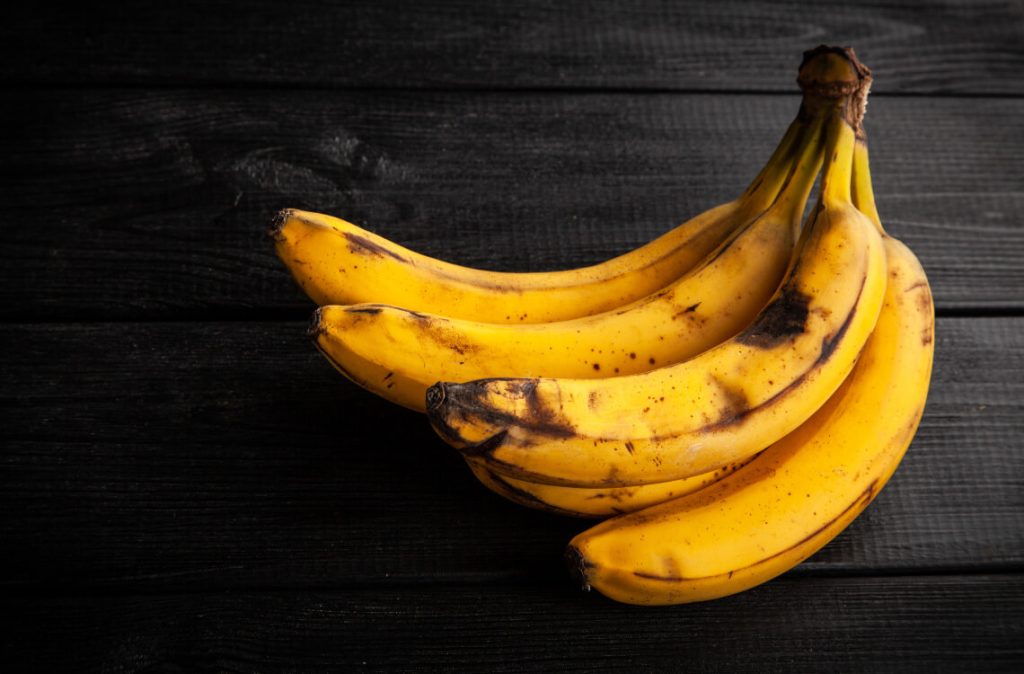We all go on a health binge every once in a while.
Bringing back loads of bananas, apples, grapes and avocadoes. Sometimes however, they get forgotten at the back of the fridge until it’s too late.
Before you go ahead and throw away your fruits, did you know you can still salvage them. But first, let’s understand the difference between an overripe fruit and a rotten one.
Overripe Vs Rotten
It’s important to be able to tell the difference between overripe fruit and fruit that has become rotten. Remember that consuming spoiled fruit can be dangerous. Here are some key differences to help you tell them apart:
Overripe Fruit
- Texture: Overripe fruit is typically softer than when it was fresh. It may feel slightly mushy or squishy to the touch, but it still holds its shape.
- Colour: Overripe fruit often changes colour, becoming more vibrant or darker as it ripens. For example, bananas will develop brown spots as they ripen, while peaches may become deep orange or red.
- Smell: Overripe fruit usually has a sweet and slightly fermented aroma. It may have a strong, pleasant fruity smell.
- Taste: Overripe fruit is usually sweeter and may have a more concentrated flavour than when it was fresh. It’s still safe to eat and can be used in cooking and baking.
Rotted or Spoiled Fruit
- Texture: Rotted fruit is usually extremely soft, mushy, and may even be slimy. It may easily fall apart or have visible mould growth.
- Colour: Rotted fruit often appears discoloured, with dark or black patches, mould, or a fuzzy texture. This is a clear sign of spoilage.
- Smell: Rotted fruit typically has a strong, unpleasant odour. It may smell sour, rotten, or like vinegar, indicating it’s no longer safe to consume.
- Taste: Rotted fruit will taste bad, sour, or rancid. Consuming it can lead to stomach upset or food poisoning.
How to Salvage Overripe Fruit
Overripe and old fruits don’t have to go to waste. There are several creative and practical ways to use them, reducing food waste and potentially saving you money. Here are some suggestions:
Smoothies
Overripe fruits can be blended into delicious smoothies. They add natural sweetness and a unique flavour.
Frozen Fruit
Freeze overripe fruits for later use in smoothies or baking. Simply peel, slice, and store in a freezer-safe container.
Jam or Preserves
Make homemade jam or preserves. Overripe fruits are perfect for this, as they’re naturally sweeter.
Feed Wildlife: If the fruits are too far gone for human consumption, you can still put them to good use by leaving them out for wildlife like birds or squirrels.
Baking
Overripe bananas are excellent for banana bread or muffins. You can also use overripe apples, peaches, or berries in pies, crisps, or cobblers.
Compost
If the fruits are beyond use, consider adding them to your compost bin to enrich your garden soil.
Fruit Sorbet
Blend overripe fruits with a bit of honey and freeze them into a refreshing sorbet.
Fruits Still Safe to Eat When Overripe
Overripe fruits can still be used for cooking and eating, as long as they haven’t become spoiled or mouldy. Here are some common types of overripe fruits that are still usable:
- Bananas: Overripe bananas are perfect for making banana bread, muffins, pancakes, or smoothies. The riper they are, the sweeter and more flavourful they become.
- Apples: Overripe apples can be used in applesauce, apple butter, or as a topping for oatmeal or yogurt. They’re also suitable for baking in pies, crisps, or cobblers.
- Berries: Overripe berries can be used in jam, preserves, or as a topping for desserts. You can also blend them into smoothies or use them in baking.
- Mangoes: Overripe mangoes are great for making mango lassi, smoothies, or sorbet. They can also be used in salsas or chutneys.
- Peaches and Nectarines: Overripe peaches and nectarines can be used in peach cobbler, pies, jams, or as a topping for ice cream.
- Citrus Fruits: Overripe citrus fruits can be juiced and used in various recipes, such as salad dressings, marinades, or as an ingredient in cocktails. You can also use the zest for added flavour.
- Avocado: Overripe avocados can be used in smoothies, mashed into guacamole, or blended into creamy salad dressings.
Remember that while overripe fruits may not look their best, they can still be very flavourful and suitable for cooking and baking. Be sure to taste them first to ensure they haven’t become too mushy or spoiled, and adjust the sweetness in your recipes accordingly.
Don’t Through Away Those Fruits
Overripe fruit is still safe to eat and can be used in cooking or baking, while rotted or spoiled fruit has a significantly altered texture, appearance, smell, and taste, and should be discarded.
Always use your senses of touch, sight, smell, and taste to assess the condition of the fruit before consuming it. When in doubt, it’s better to err on the side of caution and discard the fruit.
Hopefully these ideas will help you salvage your overripe fruits and save some money along the way too.
For more insightful stories and fun recipes, stay tuned to Motherhood Story!
